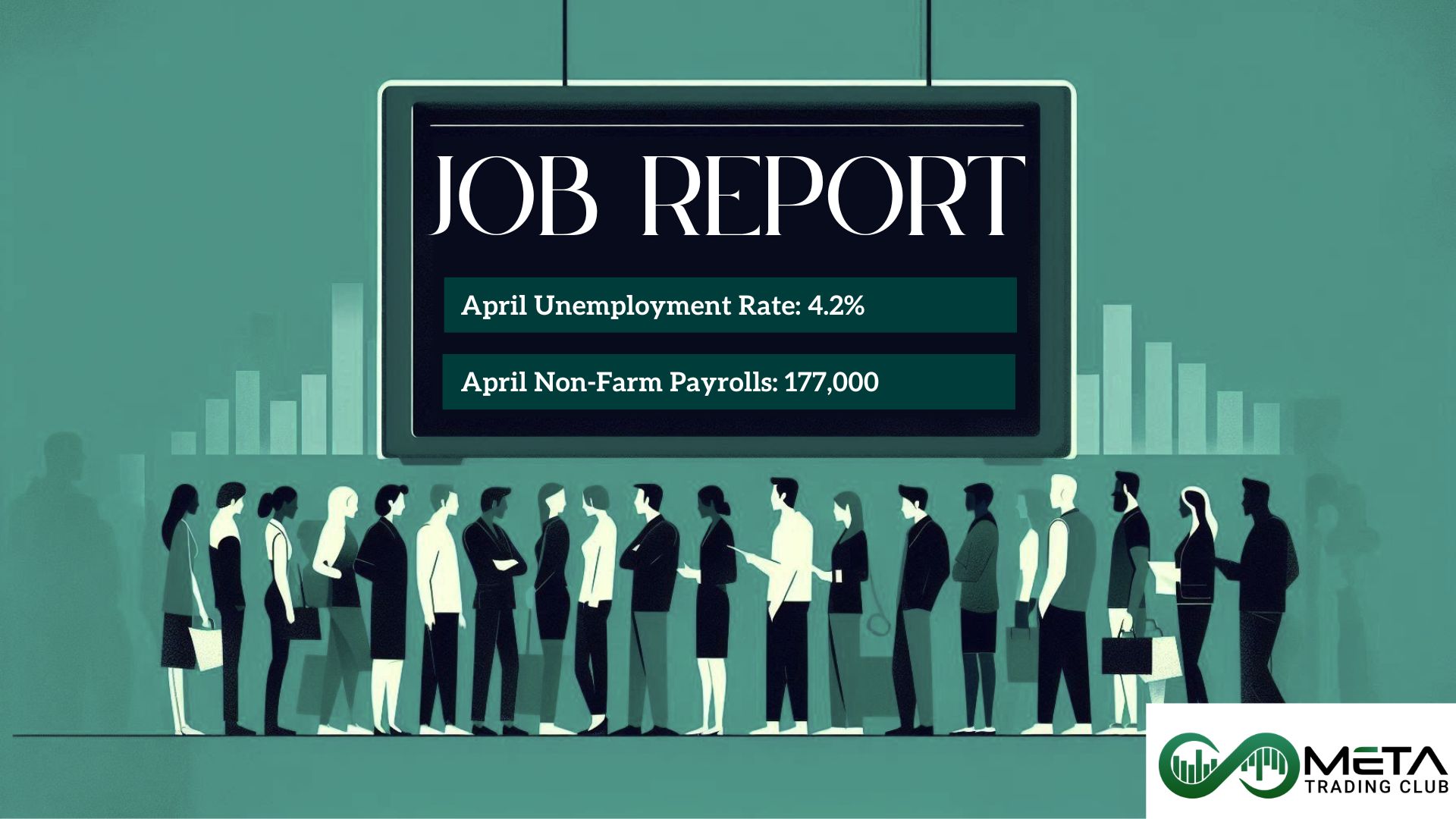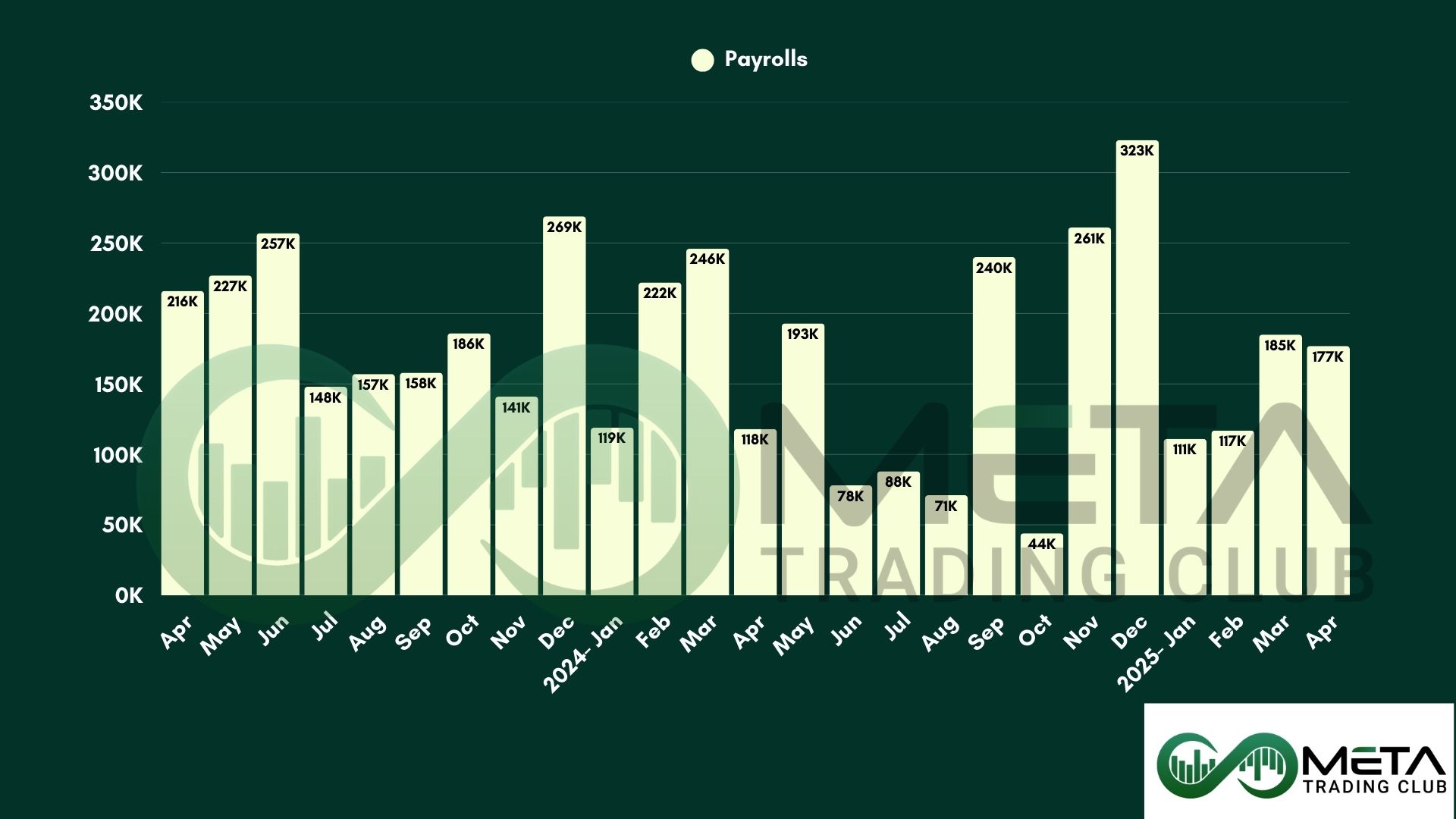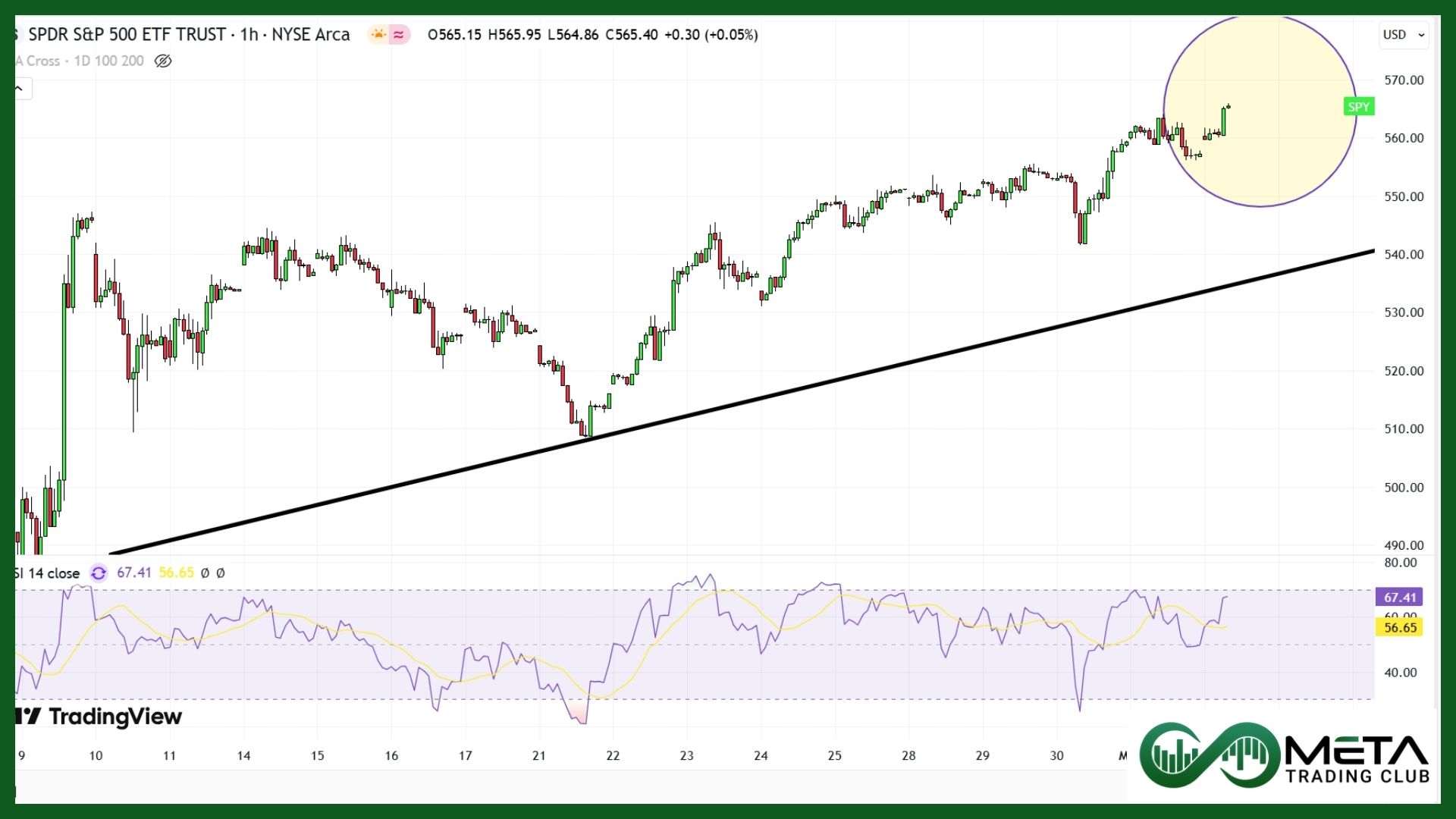The unemployment rate is a measure of the percentage of the total labor force that is unemployed but actively seeking employment and willing to work. It’s a key indicator of the health of the labor market and the economy. For example, an unemployment rate of 4.2% means that 4.2% of the people who are able and willing to work are currently without a job.
Nonfarm payrolls refer to the total number of paid workers in the U.S. excluding farm employees, government employees, private household employees, and employees of nonprofit organizations. This statistic is reported monthly by the U.S. Bureau of Labor Statistics and is a critical indicator of economic health. An increase in nonfarm payrolls typically signals economic growth and means more jobs creation.
Employment Situation – April 2025
The U.S. job market showed moderate growth in April, with total nonfarm payroll employment increasing by 177,000, keeping the unemployment rate steady at 4.2%. Employment gains were observed in health care, transportation and warehousing, financial activities, and social assistance, while federal government employment declined.
Household Survey Data
- The unemployment rate remained unchanged at 4.2%, with 7.2 million unemployed people.
- Long-term unemployment (jobless for 27+ weeks) increased by 179,000, totaling 1.7 million individuals.
- The labor force participation rate held steady at 62.6%, and the employment-population ratio remained at 60.0%.
- The number of part-time workers due to economic reasons remained unchanged at 4.7 million.
Establishment Survey Data
- Health care added 51,000 jobs, with hospitals (+22,000) and ambulatory health care (+21,000) seeing growth.
- Transportation and warehousing gained 29,000 jobs, with increases in warehousing (+10,000), couriers (+8,000), and air transport (+3,000).
- Financial activities added 14,000 jobs, continuing an upward trend since April 2024.
- Social assistance grew by 8,000 jobs, but at a slower pace than previous months.
- Federal government employment declined by 9,000, down 26,000 since January.
- Other major industries saw little or no change in employment.
Wages & Work Hours
- Average hourly earnings increased by 0.2% to $36.06, marking a 3.8% increase over the past 12 months.
- Production and nonsupervisory workers saw a wage increase of 0.3% to $31.06.
- The average workweek remained unchanged at 34.3 hours, with manufacturing hours decreasing slightly to 40.0 hours.
Impacts of Report on Stock Market
April’s employment report reflects steady labor market conditions, with job growth in key industries but government employment declines and wage growth stabilizing.
The steady job growth of 177,000 and unchanged unemployment rate of 4.2% signaled economic stability, which can support investor confidence. However, slower hiring trends in some sectors and declining federal government employment raised concerns about broader economic momentum.
Wage growth remained moderate at 0.2%, which may ease inflation fears but could also signal slower consumer spending. The labor force participation rate holding at 62.6% suggests that workforce expansion remains limited, potentially affecting long-term economic growth.














